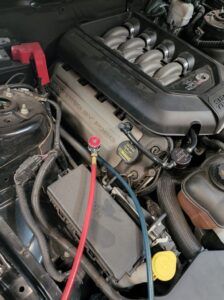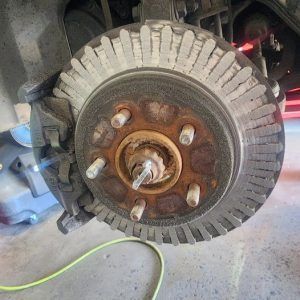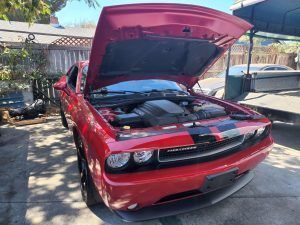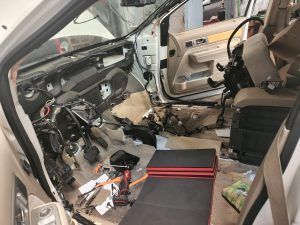Radiator Anatomy: How Your Car’s Cooling System Keeps Things Cool
Do you ever wonder how your car’s engine manages to stay cool, even during those scorching summer days or long drives? The answer lies in the intricate system known as the radiator. Understanding the radiator anatomy is essential for every car owner, as it plays a crucial role in maintaining optimal engine temperature and preventing overheating.
In this article, we will delve into the inner workings of your car’s cooling system, exploring its various components and how they work together to dissipate excess heat. We will also discuss the transfer of heat within the radiator and provide valuable tips for maintaining and troubleshooting your cooling system.
Additionally, for those seeking maximum performance, we will explore options for upgrading your radiator. Prepare to gain a comprehensive understanding of radiator anatomy, and discover how this vital component keeps your car’s engine cool, no matter the conditions.
Key Takeaways
– The radiator is an essential component of a car’s cooling system and dissipates excess heat generated by the engine.
– Regular maintenance and timely replacement of the water pump and thermostat are important for the proper functioning of the radiator and cooling system.
– Upgrading the radiator can enhance cooling system efficiency, prevent overheating, and improve overall engine performance.
– Consult a trusted mechanic or radiator specialist for the best radiator option that is compatible with the vehicle’s make and model.
Understanding the Basics of Radiator Function
Let’s dive into the nitty-gritty of how your car’s radiator works to keep your engine from overheating. The radiator is a crucial component of your car’s cooling system, responsible for dissipating the excess heat generated by the engine. Understanding the basics of radiator function is essential for radiator maintenance and troubleshooting common radiator problems.
To begin with, the radiator acts as a heat exchanger, transferring the heat from the engine coolant to the surrounding air. It consists of a series of thin tubes, called the core, which are connected to the engine through hoses. As the hot coolant flows through these tubes, the heat is absorbed by the metal and transferred to the fins attached to them. The fins, in turn, increase the surface area exposed to the air, allowing for efficient heat dissipation.
To ensure proper radiator function, regular maintenance is necessary. This includes checking the coolant level, inspecting for leaks, and cleaning any debris that may obstruct airflow. Common radiator problems include clogs caused by rust or mineral deposits, leaks from damaged hoses or seals, and overheating due to a malfunctioning thermostat.
Now that we understand the basics of radiator function and maintenance, let’s explore the components of a car’s cooling system in more detail.
Exploring the Components of a Car’s Cooling System
In understanding the components of a car’s cooling system, it’s crucial to recognize the role of coolant. The coolant serves as a vital fluid that absorbs heat from the engine and transfers it to the radiator for cooling.
Another important component is the water pump. The water pump plays a key role in circulating the coolant throughout the engine. It ensures that heat is effectively dissipated, keeping the engine cool and preventing overheating.
Lastly, we have the thermostat. The thermostat regulates the engine’s temperature by controlling the flow of coolant. It ensures optimal operating conditions by opening and closing to maintain the desired temperature.
Overall, these three components, coolant, water pump, and thermostat, work together to maintain the proper temperature of the car’s engine.
The Role of Coolant
To keep your car’s engine from overheating, you need to understand how coolant works to regulate its temperature. Coolant, also known as antifreeze, is a vital component of your car’s cooling system. It is a mixture of water and additives, such as ethylene glycol, which prevent freezing and boiling. The composition of coolant allows it to absorb heat from the engine, lowering its temperature. As the engine heats up, the coolant circulates through the engine block, absorbing the excess heat. It then flows to the radiator, where it releases the heat to the air passing through the radiator fins. This process of coolant circulation helps maintain the engine at an optimal temperature, preventing overheating. Speaking of circulation, the next component responsible for this function is the water pump.
The Function of the Water Pump
The water pump plays a crucial role in maintaining the optimal temperature of your engine by circulating coolant throughout the system. It is responsible for keeping the coolant flowing smoothly, which prevents overheating and ensures the engine operates at its best.
To ensure the proper functioning of your water pump, regular maintenance is necessary. This includes checking for any leaks or corrosion, as well as making sure the pump is properly lubricated. If your water pump starts to show signs of wear or fails, it’s important to replace it promptly to avoid any engine damage.
Regular maintenance and timely replacement of the water pump will help keep your engine running smoothly and prevent costly repairs.
Moving on to the importance of the thermostat, it also plays a key role in regulating the engine’s temperature.
The Importance of the Thermostat
One crucial component that cannot be overlooked is the thermostat, which plays a vital role in regulating the engine’s temperature. The thermostat is responsible for maintaining the optimal temperature for the engine to operate efficiently. It achieves this by controlling the flow of coolant through the radiator.
When the engine is cold, the thermostat remains closed, preventing coolant from circulating. This allows the engine to warm up quickly and reach its ideal operating temperature. Once the engine reaches the desired temperature, the thermostat opens, allowing coolant to flow through the radiator, where it is cooled down before returning to the engine.
It’s important to regularly maintain the thermostat to ensure its proper functioning. If the thermostat fails, it should be replaced promptly to prevent engine overheating.
Now, let’s move on to how heat is transferred in the radiator.
How Heat is Transferred in the Radiator
Heat is transferred through the radiator using a combination of conduction, convection, and radiation. Understanding these heat transfer mechanisms is crucial in maintaining radiator efficiency.
1. Conduction: Heat is transferred from the engine coolant to the radiator tubes through direct contact. The metal walls of the tubes conduct the heat, allowing it to move from the coolant to the surrounding air.
2. Convection: As the hot coolant flows through the radiator, the surrounding air absorbs the heat through convection. The radiator’s fins increase the surface area, facilitating efficient heat transfer.
3. Radiation: In addition to conduction and convection, heat is also emitted from the radiator’s surface through radiation. This process involves the transfer of heat in the form of electromagnetic waves.
Understanding how heat is transferred in the radiator helps ensure optimal cooling system performance. By maximizing each mechanism, the radiator efficiently dissipates the excess heat generated by the engine.
Now that you know how heat is transferred in the radiator, it’s important to understand how to maintain and troubleshoot your car’s cooling system.
Maintaining and Troubleshooting Your Car’s Cooling System
Now that you understand how heat is transferred in the radiator, let’s delve into maintaining and troubleshooting your car’s cooling system.
As a responsible car owner, it’s crucial to regularly inspect your cooling system for any issues that may arise. One common problem you may encounter is coolant leak detection. Keep an eye out for any signs of coolant leaks, such as puddles under your car or a decrease in coolant levels. If you notice a leak, it’s important to address it promptly to prevent further damage to your engine.
In addition to coolant leaks, there are other common cooling system problems you should be aware of. These can include a faulty thermostat, a malfunctioning water pump, or a clogged radiator. Regularly checking and maintaining these components will help ensure the optimal functioning of your car’s cooling system.
As we move forward, we’ll discuss how to upgrade your radiator for optimal performance. By making the right upgrades, you can enhance the cooling capabilities of your radiator and keep your engine running at an optimal temperature.
So, let’s explore the possibilities of upgrading your radiator and maximizing your car’s cooling system efficiency.
Upgrading Your Radiator for Optimal Performance
To maximize your car’s cooling efficiency, upgrading the radiator is key. The radiator is a crucial component of your car’s cooling system, responsible for dissipating heat generated by the engine.
Regular radiator maintenance is essential to ensure optimal performance and prevent overheating issues. However, if you’re looking to take your cooling system to the next level, consider upgrading your radiator.
There are several benefits to upgrading your radiator. First and foremost, an upgraded radiator can handle higher heat loads, making it ideal for high-performance vehicles or those that frequently tow heavy loads. By increasing the cooling capacity, an upgraded radiator can help prevent overheating, even under extreme conditions.
Furthermore, upgrading your radiator can improve overall engine performance. A more efficient radiator can help keep the engine at an optimal operating temperature, which can result in increased horsepower and improved fuel efficiency. Additionally, a high-quality radiator can provide better corrosion resistance, ensuring longevity and reliability.
When considering a radiator upgrade, it’s important to choose a radiator that is compatible with your vehicle’s make and model. Consult with a trusted mechanic or radiator specialist to determine the best radiator option for your car.
Upgrading your radiator can significantly improve your car’s cooling system’s performance. With increased cooling capacity, improved engine performance, and enhanced durability, a radiator upgrade is a worthwhile investment for any car owner.
Frequently Asked Questions
How often should I flush and refill my car’s cooling system?
To properly maintain your car’s cooling system, you should flush and refill it every 2-3 years. Understanding the importance of coolant in your radiator ensures optimal performance and prevents overheating.
Can I use water instead of coolant in my radiator?
You can use water instead of coolant in your radiator, but it has pros and cons. Water is cheaper and readily available, but it doesn’t provide the same level of protection against freezing and corrosion as coolant.
What are the signs of a failing radiator and cooling system?
To prevent radiator failure, watch out for common radiator problems like leaks, overheating, and coolant loss. Keep an eye on your temperature gauge, check for coolant leaks regularly, and flush your cooling system as recommended by your vehicle’s manufacturer.
Is it necessary to replace the radiator hoses and belts regularly?
To extend the lifespan of radiator belts, properly maintain them by checking for signs of wear and tension. Silicone hoses in car radiators offer benefits such as durability, resistance to heat and corrosion, and improved performance.
Can I install a larger radiator in my car for better cooling capacity?
Yes, you can upgrade your radiator for better cooling capacity. The benefits include improved heat dissipation and engine performance. However, drawbacks may include increased weight and cost, as well as potential compatibility issues with other components.
Conclusion
In conclusion, understanding the anatomy of your car’s radiator and cooling system is crucial for maintaining optimal performance. By comprehending the basics of radiator function and exploring its components, you can ensure that heat is efficiently transferred and your engine stays cool.
Regular maintenance and troubleshooting are also important to prevent potential issues. And if you’re looking for improved performance, consider upgrading your radiator.
With this knowledge, you can confidently keep your car’s cooling system in top shape.







